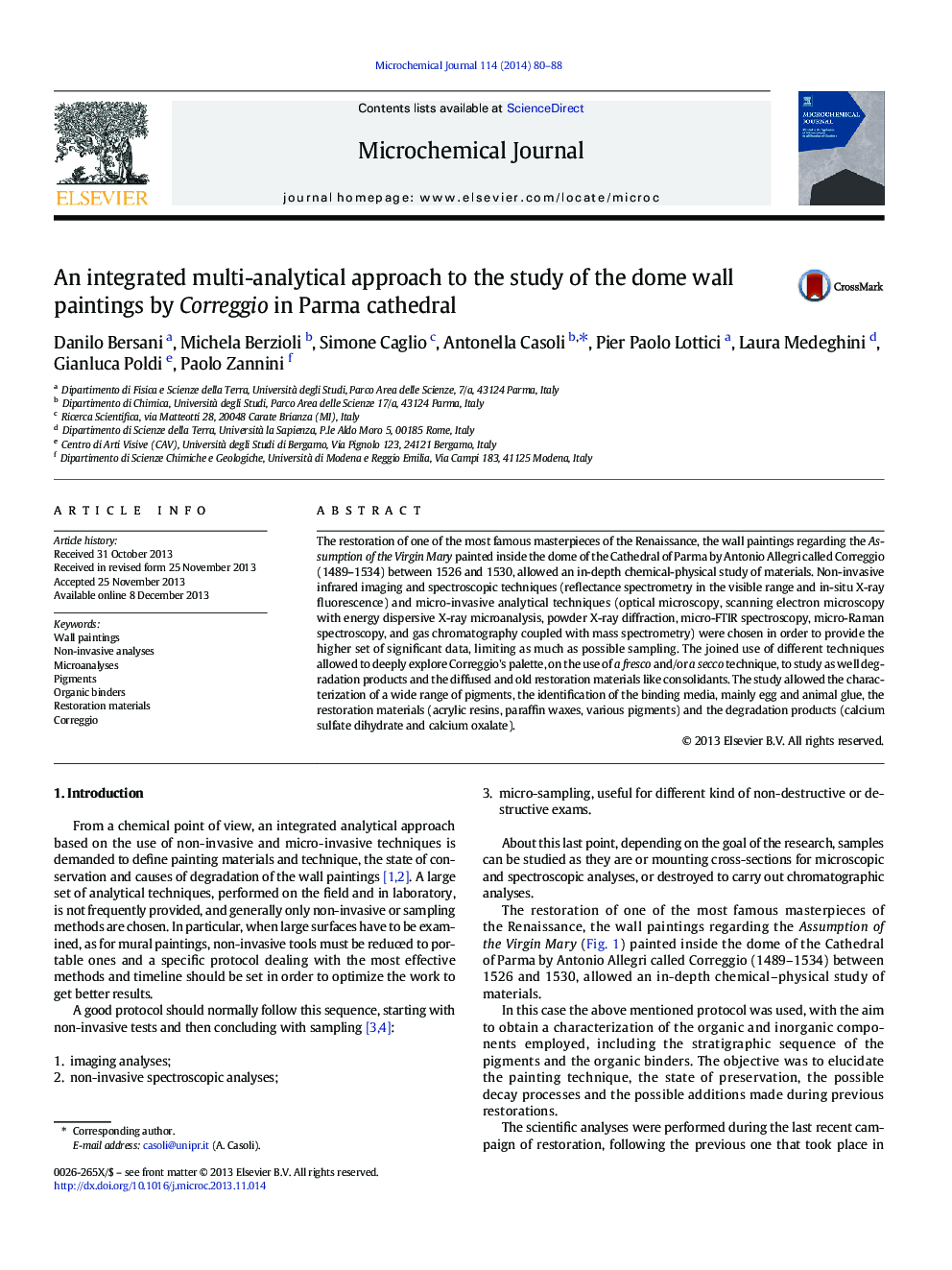| Article ID | Journal | Published Year | Pages | File Type |
|---|---|---|---|---|
| 7643125 | Microchemical Journal | 2014 | 9 Pages |
Abstract
The restoration of one of the most famous masterpieces of the Renaissance, the wall paintings regarding the Assumption of the Virgin Mary painted inside the dome of the Cathedral of Parma by Antonio Allegri called Correggio (1489-1534) between 1526 and 1530, allowed an in-depth chemical-physical study of materials. Non-invasive infrared imaging and spectroscopic techniques (reflectance spectrometry in the visible range and in-situ X-ray fluorescence) and micro-invasive analytical techniques (optical microscopy, scanning electron microscopy with energy dispersive X-ray microanalysis, powder X-ray diffraction, micro-FTIR spectroscopy, micro-Raman spectroscopy, and gas chromatography coupled with mass spectrometry) were chosen in order to provide the higher set of significant data, limiting as much as possible sampling. The joined use of different techniques allowed to deeply explore Correggio's palette, on the use of a fresco and/or a secco technique, to study as well degradation products and the diffused and old restoration materials like consolidants. The study allowed the characterization of a wide range of pigments, the identification of the binding media, mainly egg and animal glue, the restoration materials (acrylic resins, paraffin waxes, various pigments) and the degradation products (calcium sulfate dihydrate and calcium oxalate).
Related Topics
Physical Sciences and Engineering
Chemistry
Analytical Chemistry
Authors
Danilo Bersani, Michela Berzioli, Simone Caglio, Antonella Casoli, Pier Paolo Lottici, Laura Medeghini, Gianluca Poldi, Paolo Zannini,
